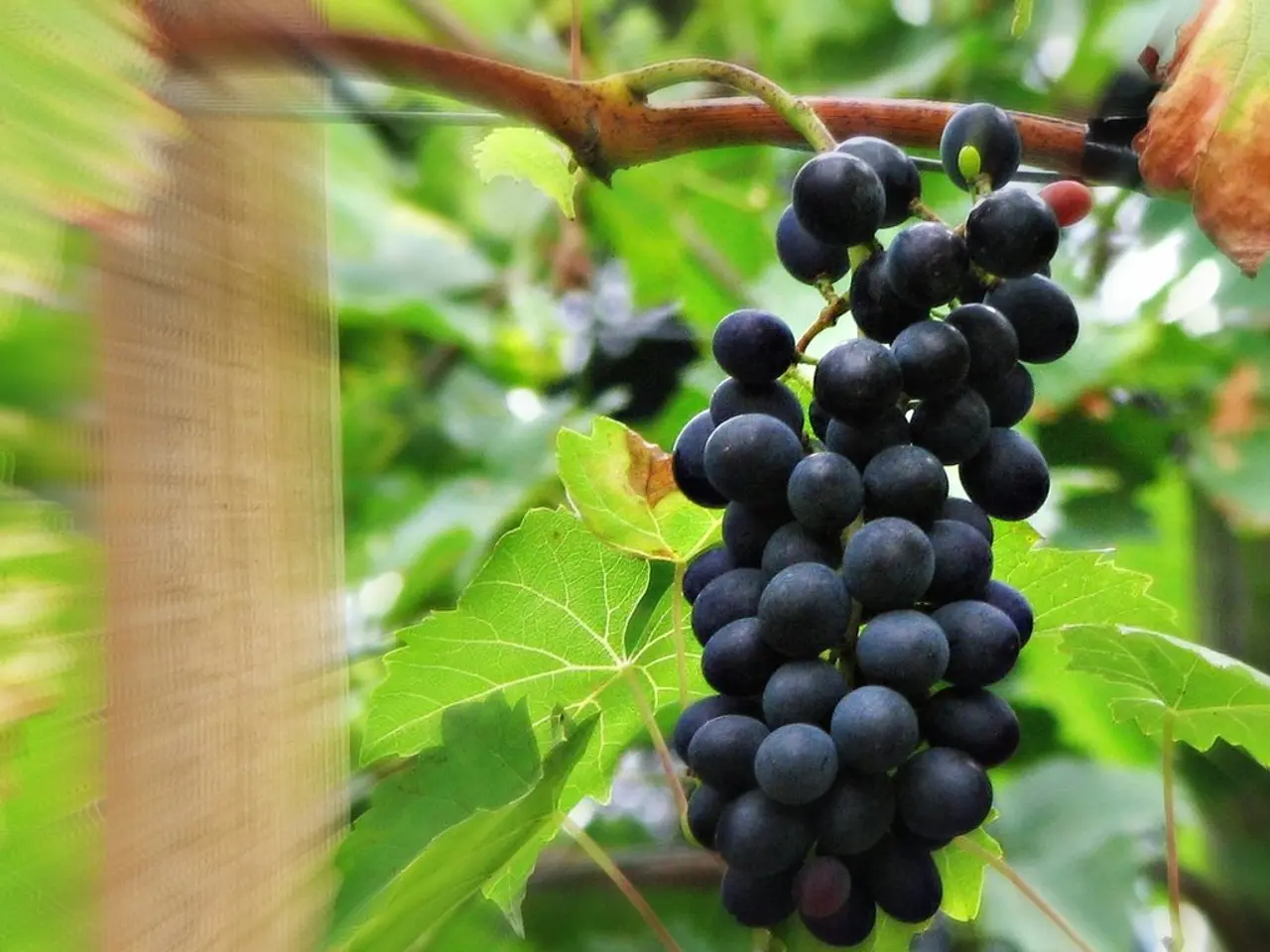Grape Black Rot Disease: Overview and Impact on Wine Production
In Ohio vineyards, grape growers face a common challenge: black rot, a fungal disease caused by Guignardia bidwellii. This disease can significantly impact grape clusters and vine vigor, particularly during warm and humid weather conditions.
The disease thrives in temperatures between 15°C (59°F) and 30°C (86°F), and requires at least 6 continuous hours of leaf wetness, often due to frequent rainfall or heavy dew, especially in dense foliage that restricts airflow and maintains moisture on leaves and berries.
To combat black rot, Ohio vineyards should implement a combination of cultural practices and chemical management.
Cultural practices include: - Early leaf removal at the pre-bloom or pea-size berry stage to improve berry exposure and reduce humidity in the canopy. - Removal of mummified berries and infected wood during the dormant seasons to reduce overwintering inoculum. - Maintaining open canopies through pruning to improve airflow and reduce prolonged leaf wetness.
Chemical management typically involves timely application of fungicides targeting the key infection periods in spring and early summer, particularly before and during wet conditions that favor spore spread. Integrated pest management (IPM) principles suggest combining monitoring with judicious fungicide use to minimize resistance risk and environmental impact. Ohio growers should follow local extension guidelines for specific fungicide choices and spray schedules adapted to their microclimate and varietal susceptibility.
Backyard growers can refer to Bulletin 780 for fungicide recommendations, while commercial growers should consult the Midwest Fruit Pest Management Guide (Bulletin 506).
Symptoms of black rot first appear as small yellow spots on leaves. Enlarged spots have a dark brownish-red border with tan to dark brown centers. Lesions on shoots, cluster stems, rachises, and tendrils are oval shaped and sunken with a purple to black color. Tiny black dots, fungal structures (pycnidia) containing thousands of spores, appear in the lesion, usually in a ring pattern near the border of the lesion.
Removing mummies from the vineyard floor or canopy has the largest impact on black rot. Removing diseased fruit when first observed is encouraged in small plantings. Pruning diseased tendrils and canes during the dormant season also reduces spores.
Sanitation is crucial for limiting black rot inoculum in a vineyard. In the spring, ascospores are forcibly released into the air and spread to new tissues.
By following these practices and staying vigilant, Ohio vineyards can effectively manage black rot and protect their grape crops.
- Science and health-and-wellness are crucial in the field of pest management, as Ohio vineyards need to understand the medical-conditions of black rot and the role of the fungus Guignardia bidwellii to effectively implement pest management strategies.
- In the struggle against black rot, Ohio growers should not only rely on chemical management and fungicide applications, but also employ science-based cultural practices such as early leaf removal, mummified berry and infected wood removal, and pruning for proper canopy management to reduce humidity, promote airflow, and improve overall vineyard health.




